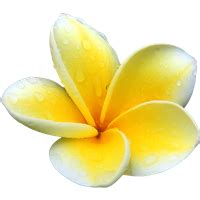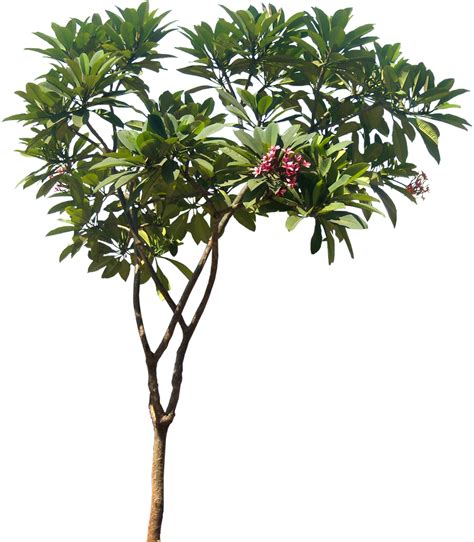Plumeria leaves may curl due to various reasons such as overwatering, underwatering, pests, diseases, or environmental stress. Overwatering can cause root rot, leading to curled leaves. Underwatering can cause dehydration, resulting in curled leaves. Pests like spider mites or mealybugs can also cause leaf curling.
Diseases like plumeria rust or black tip fungus can cause leaf curling as well. Environmental stressors like extreme temperatures or exposure to direct sunlight can also cause leaf curling. To prevent leaf curling, ensure proper watering, inspect for pests and diseases, and provide adequate shade and protection from harsh weather conditions.
How do you fix curling leaves?
Curling leaves can be a sign of various issues, including overwatering, underwatering, pests, or disease. To fix curling leaves, first, identify the underlying cause. If the issue is overwatering, reduce watering frequency and ensure proper drainage. If underwatering is the problem, increase watering frequency and ensure the soil is moist.
Pests can be treated with insecticidal soap or neem oil. If the issue is disease, remove affected leaves and treat with a fungicide. Additionally, ensure the plant is receiving adequate sunlight and nutrients. Regularly inspecting and caring for your plants can prevent curling leaves and promote healthy growth.
What do overwatered plumeria leaves look like?
If you’re a Plumeria plant owner, it’s important to know that overwatering can cause a variety of issues. One of the most common signs of overwatering is brown spots on the foliage, as well as yellowing and softening of the leaves. Wilting is also a common symptom, as well as root and stem rot. Additionally, you may notice mold growing on the growing medium.
While Plumeria plants do love moisture, they cannot survive prolonged exposure to excessive water. Keep an eye on your plant’s watering schedule and make sure to allow the soil to dry out between waterings to prevent these issues from occurring.
Why are my plumeria leaves turning yellow and curling?
If you notice your plumeria leaves turning yellow, it could be a sign of an infestation of sap-sucking insects like mealybugs, spider mites, or thrips. While some plumeria may naturally lose their leaves during cooler weather, distorted growth and leaf curl are also indicators of an infestation. To confirm, inspect the leaves closely for tiny cotton-like spots or webbing. It’s important to address the infestation promptly to prevent further damage to your plumeria plant.
What causes leaf curl on plumerias?
If you notice your plumeria leaves curling, it could be a sign of stress. This stress is often due to a lack of nutrients reaching the leaves. The cause of this can vary, from fungal attacks on the roots to bacterial infections in the stem. However, sometimes it can be as simple as your plumeria being too close to a heat source like a radiator.
It’s important to identify the cause of the stress and take appropriate action to ensure the health and vitality of your plumeria plant.
What deficiency causes curling of leaves?
A lack of phosphorus in plants can lead to a variety of symptoms, including curled and distorted older leaves that are smaller than usual. Additionally, purple leaf veins and tip dieback are common signs of phosphorus deficiency. Another indicator is the purpling of leaf undersides. It’s important to address phosphorus deficiency promptly to ensure healthy plant growth and development.
Can plants recover from leaf curl?
If you’ve noticed your plant’s leaves starting to curl, don’t worry too much. While it’s not ideal, this issue is relatively easy to fix. Unlike other plant problems, curled leaves are often reversible. So, there’s no need to panic if you see your plant looking a little miserable.
With some simple adjustments, you can help your plant get back to its healthy, vibrant self.
Should I remove leaves with leaf curl?
If the leaf curl infection is not managed properly and allowed to persist for a prolonged period, it can cause the tree to deteriorate and eventually require removal. This highlights the importance of promptly addressing any signs of leaf curl infection in order to prevent further damage and preserve the health of the tree.
How do you treat leaf curls naturally?
If you’re looking for a natural solution to keep your garden healthy, consider using a vinegar solution. Specifically, live apple cider vinegar with the “mother” visible in the bottle. While this solution may require more frequent spraying, it is effective in keeping pests and weeds at bay. However, it may be more suitable for smaller gardens.
Give it a try and see the benefits for yourself!
Should I remove curled leaves?
To prevent the spread of infection in trees, it’s important to remove any curled, puckered leaves and avoid letting them accumulate under the tree. These leaves can release spores that can infect not only the tree but also neighboring trees. By keeping the area around the tree clean, you can help prevent the spread of disease and promote the overall health of the tree and its surroundings.
Can too much sun cause leaves to curl?
Leaf scorching is a prevalent issue that occurs when houseplants are exposed to excessive sunlight. The leaves of the plant may turn yellow or brown, and the edges may curl up. This can be a sign that the plant is receiving too much direct sunlight, which can cause damage to the leaves and hinder the plant’s growth. It’s important to monitor the amount of sunlight your houseplants receive and adjust their placement accordingly to prevent leaf scorching.
Does overwatering cause leaf curl?
Overwatering or underwatering can both cause leaves to wilt or curl up in plants. It’s important to maintain a balance and keep the soil moist, but not overly saturated. Additionally, extreme heat and drought can also lead to leaf curling. By monitoring the watering schedule and providing adequate moisture, plants can thrive and avoid stress-induced symptoms.
Do leaves curl from over or watering?
If you notice that the tips and edges of your plant’s leaves are curling or cupping, it could be a sign that the plant is trying to conserve moisture. However, if the leaves are curling downwards, it may be a sign of overwatering or overfeeding. It’s important to pay attention to your plant’s behavior and adjust your watering and feeding schedule accordingly. By doing so, you can help your plant thrive and avoid any unnecessary stress.
Why is plant leaf turning curly?
According to Patch’s plant doctor, Richard Cheshire, plants can experience heat stress when they are exposed to excessive amounts of direct light or heat. In response, they may curl up their leaves to conserve moisture. This is a natural defense mechanism that helps them survive in harsh conditions.
What makes leaves curl?
CAUSE: When plants are exposed to high temperatures, they tend to lose moisture rapidly due to evaporation, leading to heat stress. This can happen when plants are placed too close to high-intensity lights or in rooms where temperatures are consistently above 80 degrees F.
QUICK FIX: To combat heat stress, it’s important to set up fans that can blow out hot air and bring in cooler fresh air. This will help regulate the temperature and prevent excessive moisture loss in plants.
By taking these simple steps, you can ensure that your plants remain healthy and vibrant, even in hot and humid conditions.
What are the symptoms of leaf curl disease?
Tomato plants affected by TYLCV exhibit several symptoms that are easy to spot. One of the most noticeable signs is the yellowing of leaves between the veins, which are also prone to curling upwards and towards the middle of the leaf. This can be seen in Figure 1. In seedlings, the shoots become shortened, giving the young plants a bushy appearance.
These symptoms can help growers identify the presence of TYLCV in their tomato plants and take appropriate measures to prevent its spread.
Why does leaf curl occur?
“`Leaf curl, or peach leaf curl, is a fungal disease that can wreak havoc on peaches, nectarines, and ornamental flowering peaches. Taphrina deformans is the culprit behind this disease, which can affect the blossoms, fruit, leaves, and shoots of these trees. For those who enjoy growing these trees in their backyard, leaf curl is one of the most common disease problems they may encounter.“`
Why is plant leaf turning curly?
According to Patch’s plant doctor, Richard Cheshire, plants can experience heat stress when they are exposed to excessive amounts of direct light or heat. In response, they may curl up their leaves to conserve moisture. This is a natural defense mechanism that helps them survive in harsh conditions.
What causes leaves to curl up?
CAUSE: When plants are exposed to high temperatures, they tend to lose moisture rapidly due to evaporation, leading to heat stress. This can happen when plants are placed too close to high-intensity lights or in rooms where temperatures are consistently above 80 degrees F.
QUICK FIX: To combat heat stress, it’s important to set up fans that can blow out hot air and bring in cooler fresh air. This will help regulate the temperature and prevent excessive moisture loss in plants.
By taking these simple steps, you can ensure that your plants remain healthy and vibrant, even in hot and humid conditions.
What does it mean when plant leaves start to curl?
If you notice that the tips and margins of your plant’s leaves are curling or cupping, it’s a sign that the plant is trying to hold onto moisture. However, if the leaves are curling downwards, it could be a result of overwatering or overfeeding. To address overfeeding issues, you can use a flush product to remove excess nutrients from your plants and growing media. This will help your plants recover and thrive.
Related Article
- Why Are My Philodendron Leaves Curling?
- Why Are My Petunias Turning Brown?
- Why Are My Peppers So Small?
- Why Are My Orchids Leaves Drooping?
- Why Are My Orchid Leaves Splitting?
- Why Are My Orchid Leaves Curling?
- Why Are My Onions So Small?
- Why Are My Onions Falling Over?
- Why Are My Nipples Turning Purplish?
- Why Are My Mums Turning Purple?


